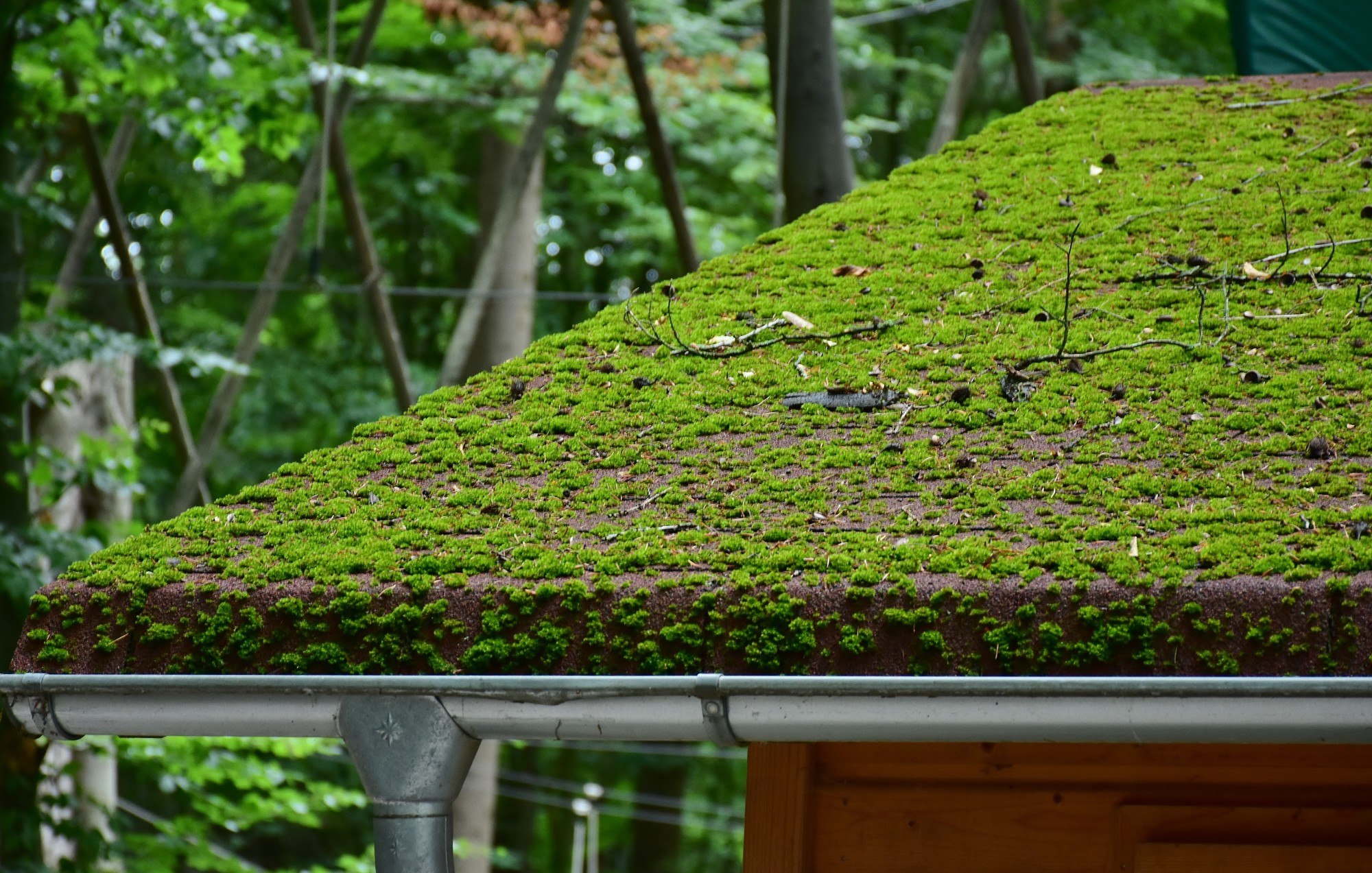
Why Moss on Your Roof Is Bad (And What You Need to Know)
So, you woke up and noticed moss growing on the roof. This is a common problem for homeowners, but it isn’t a pleasant one. While your average shingle roof is supposed to last for up to 25 years, moss can quickly shorten that lifespan.
Fortunately, there are ways to address the problem, and it’s easier than you’d think. Let’s talk about moss on roof shingles, the problems it can cause, and what you can do about it!
Why Does Moss Grow on Roofs?
Moss, like most plant life, needs water to grow. However, direct sunlight tends to harm moss growth.
Unfortunately for homeowners, this makes roofs perfect environments for moss to grow, as shingles tend to retain some moisture and receive ample direct sunlight.
Consequently, moss is most likely to form underneath the shingles at first, where they can have ample shade. Over time, it can grow outward, even in direct sunlight.
Moreover, this is most common in wet and cloudy areas, such as the northern United States, essentially from coast to coast. If you live in the Great Lakes region, you’re likely quite familiar with mossy roofs.
Is Moss on the Roof Harmful?
When moss growth becomes out of control, it can pose serious threats to your roof. One of the biggest concerns is that moss can block drainage points on your roof, leading to water buildup and damage over time.
However, it can also directly affect the wooden structure of your roof, which can lead to thousands of dollars in repair costs, and potentially spread to other structural aspects of your home.
When moss begins growing underneath asphalt shingles, it can affect the integrity of the seals as well. As Moss grows upwards, the seal of the shingle can break loose and allow weak points for water to access.
Another threat is that moss retains water and potentially blocks water from reaching your gutters. As a result, this can add a lot of weight to your roof, which can eventually cause sagging, cracking, or other damage. Once it gets to this point, you will likely need to replace your shingles, and possibly your entire roof.
Therefore, it’s essential to address any moss problems on the roof as soon as possible. Under the right conditions, it can spread within a matter of weeks.
How to Treat Moss on Roof Shingles
Yes, moss on your roof can cause serious issues if left to persist. Fortunately, there are ways to remediate, remove, or prevent the problem altogether. Here’s what you need to know.
Address Moss Growth Early
The sooner you can spot moss on your roof, the better. If you see moss beginning to grow, especially in the spring, contact a professional right away. The longer you wait, the more challenging it will become to remediate, which will lead to greater expenses.
If you start to notice growth in a place you can reach, you can spray it with a 1:1 mixture of white vinegar and water to kill it. Inspecting your roof once or twice a year when you clean your gutters is always a good idea.
Hire a Professional
Often, hiring professionals is the best path forward. Roofing is one of the most dangerous professions in the country, as roofing accidents can be serious and even fatal, so it’s best to leave it to trained and insured contractors who know about moss and roofing maintenance.
Every situation is different and will call for different solutions. Therefore, you don’t want to blindly try new tools or chemicals on your roof if you don’t know what you’re doing.
In many cases, you may need to replace some or all of your roof shingles to mitigate the problem. Otherwise, it will only get worse. Talk to a roof maintenance professional to see what they can offer you!
Prevent Future Moss On Roof Growth
Preventing moss from growing in the first place is one of your best lines of defense. Start by trimming tree branches that crowd around your home, as these may provide the shade moss needs to thrive.
Remove any other obstructions that may be present, including tarps. Even small amounts of regular sunlight can kill moss, or at least slow its growth.
Next, make sure that there is space for water flow. Obstructions on the roof, clogged gutters, and bowing roofs can lead to pools of water, which will provide ample moisture for moss to grow.
Also, consider upgrading to a metal roof or using different shingles. You can talk to your roofing contractor to see your options and pricing, but there are plenty of materials that are inhospitable to moss, including algae-resistant shingles.
Finally, you can attempt to keep your roof clean if you can do it safely. Pressure washers are a great way to do this, as you don’t need to get too close. Do it on a sunny day for the best results, as it will help dry your roof quickly afterward!
Remember, once it spreads too far, there isn’t much you can do about it other than call the professionals. You can mitigate the threat of excessive weight by scraping some of it off, but that won’t stop it from eating away at the structure of your home. When in doubt, contact a professional.
Call the Professionals
Now that you know the challenges of moss on roof shingles, act quickly to prevent a disaster. If left to persist, moss can do a lot of damage in a short period, so make sure you address it before the rainy season comes.
Stay up to date with our latest tips for homeowners, and don’t hesitate to contact us with any questions or for help with your home maintenance needs!
